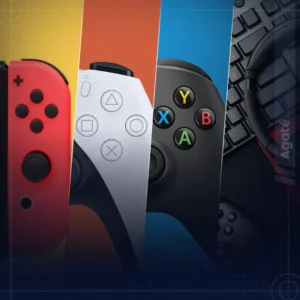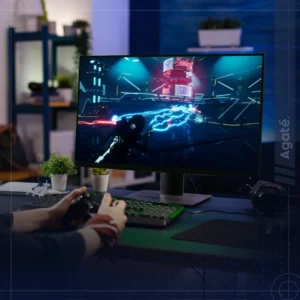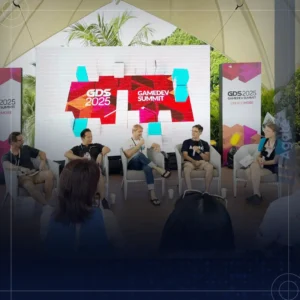Product creation is a meticulous process that requires careful consideration of multiple steps to achieve optimal results. It might be a challenging process as you may encounter challenges while exploring different ideas and changing them along the way. This is where prototyping proves to be a valuable solution. By creating prototypes, we can effectively plan and test our ideas before incorporating them into the final product, allowing us to identify the most viable concept. A prototype serves as a sample or model of the product, specifically designed for testing concepts or processes. It’s used in various fields such as design, electronics, software programming, or even for prototyping video games. With its invaluable capabilities, it aids both system analysts and users in refining their designs and elevating the overall quality of their work.
Prototyping Video Games
Ever wondered how your favorite video games come to life? One essential part of the game development process is prototyping, and it’s a game-changer. Prototyping video games gives developers a chance to playtest and see what works and what doesn’t, so they can make the right moves before the game goes live. It’s a testing phase where adjustments are made to refine the gameplay mechanics and resolve potential issues or shortcomings. From rough sketches to detailed mock-ups, game prototypes are essential for crafting a top-notch gaming experience.
In game development, prototypes play a crucial role in testing and learning. Typically, a quick and less detailed game prototype is utilized in the early stages for quality assurance (QA) testing and learning purposes. This allows developers to identify any potential issues or flaws early on. As the project progresses toward the end, more detailed and refined game prototypes are employed for testing or pilot trials. These advanced prototypes provide a more accurate representation of the final game. They are invaluable in identifying any remaining issues and fine-tuning the gameplay mechanics, user experience, and overall performance. Let’s dive deeper into the benefits of prototyping video games!
Early Identification and Resolution of Issues
Developers are able to test out different gameplay mechanics, features, and designs in a controlled environment by utilizing prototyping. This helps identify potential issues or flaws early on, allowing for timely adjustments and improvements before the game’s final development stage. This can save valuable time and resources by avoiding costly revisions during later stages of development.
Improved Gameplay and User Experience
Prototyping video games enables developers to fine-tune the gameplay mechanics, user interface, and overall user experience based on feedback received from playtesting. This iterative process helps create a more immersive and enjoyable gaming experience for players, resulting in higher player satisfaction and engagement.
Cost-effective Development
Game prototyping helps mitigate risks and uncertainties associated with game development by allowing developers to test out ideas and concepts before committing to full-scale development. This can help prevent costly mistakes and reduce the risk of developing a game that may not resonate with players. Prototyping video games also provide a valuable tool for communication and collaboration among development teams, leading to more streamlined and efficient development processes.
One of the most significant challenges in game development is ensuring that the UI is intuitive and optimized for each platform. Unintuitive interfaces and poor responsive interactions are an immediate turn-off, no matter how good your graphics are. Game developers need to understand the unique features of each platform and design their UI and UX accordingly.
Types of Prototyping Video Game
Paper Prototyping
If you find yourself in a time-constrained situation and need to test out game mechanics or other elements for your game, paper prototyping can be a valuable method to consider. Paper prototyping involves creating physical prototypes of game elements using hand-drawn sketches on paper, allowing you to quickly iterate and experiment with different ideas in a low-cost, low-tech environment.
One of the key benefits of paper prototyping is its speed and cost-effectiveness. With minimal resources required, such as paper and pencils, you can rapidly create and modify prototypes to test various gameplay mechanics, features, and designs. Additionally, paper prototyping allows for quick and easy modifications. You can make changes to your paper prototypes on the fly, adding or removing elements, adjusting mechanics, or iterating on designs in real-time. However, it’s worth noting that paper prototyping may have limitations in terms of user feedback, as it relies solely on sketches on paper, which can sometimes be inaccurate.
Wireframe Prototyping
This form of prototyping provides a clearer comprehension of the layout or mechanics of your games. It doesn’t focus on creating high-quality artwork but rather low-fidelity prototypes that assist in defining key elements of the game, such as playable and non-playable characters, the user interface (UI), and game mechanics like dialogue. For instance, wireframe prototypes can be easily generated using tools like Google Slides or PowerPoint, keeping them simple yet effective in conveying the intended game design. By using simple visual representations, game designers can define essential elements of the game and make informed decisions before moving on to more detailed development stages.
Greybox Prototyping
Greybox prototyping is an essential step in the game development process that involves creating a functional but visually simplified version of a game’s levels or scenes. This technique allows game developers to test and refine gameplay mechanics, level design, and player experience before investing significant resources into creating detailed graphics and assets. It involves creating rough, temporary 3D models or placeholders for game assets such as characters, objects, and environments. These placeholders are typically simple geometric shapes or basic textures that represent the intended final assets without the level of detail and polish that would be expected in the final game.
One of the key benefits of greybox prototyping is its ability to iterate and make changes quickly. Since the focus is on functionality rather than aesthetics, developers can easily modify and refine gameplay mechanics, level design, and other elements without the time-consuming process of creating high-quality graphics. However, some gameplay mechanics may require specific visual elements to be fully understood, so the lack of detailed graphics may limit the effectiveness of testing certain aspects of the game.
Conclusion
In conclusion, prototyping is an essential phase in the game development process that allows developers to test and refine their ideas before committing to full-scale development. From quick paper prototypes to wireframe and greybox prototypes, each type serves its purpose in identifying issues, improving gameplay and user experience, and streamlining the development process. By utilizing prototyping, developers can save time and resources, mitigate risks, and create more immersive and enjoyable gaming experiences for players. So, if you’re looking to create the next top-notch video game, consider incorporating prototyping into your development process for optimal results.







